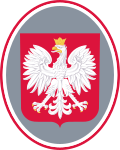Winged Lion Memorial
2014 establishments in the Czech Republic2014 sculpturesAnimal sculptures in the Czech RepublicMalá StranaMonuments and memorials in Prague ... and 3 more
Outdoor sculptures in PragueSculptures of lionsTourist attractions in Prague

The Winged Lion Memorial (in Czech: Památník Okřídleného lva) was unveiled on 17 June 2014 at Klárov in Prague by the British Member of Parliament, Rt Hon Sir Nicholas Soames MP, grandson of Sir Winston Churchill. It is dedicated to the Czechoslovak airmen who served in the Royal Air Force (RAF) during World War II and who achieved acclaim for their contribution to the Battle of Britain.
Excerpt from the Wikipedia article Winged Lion Memorial (License: CC BY-SA 3.0, Authors, Images).Winged Lion Memorial
Klárov, Prague Lesser Town
Geographical coordinates (GPS) Address Nearby Places Show on map
Geographical coordinates (GPS)
| Latitude | Longitude |
|---|---|
| N 50.090833333333 ° | E 14.410277777778 ° |
Address
Malostranská
Klárov
118 01 Prague, Lesser Town
Prague, Czechia
Open on Google Maps









